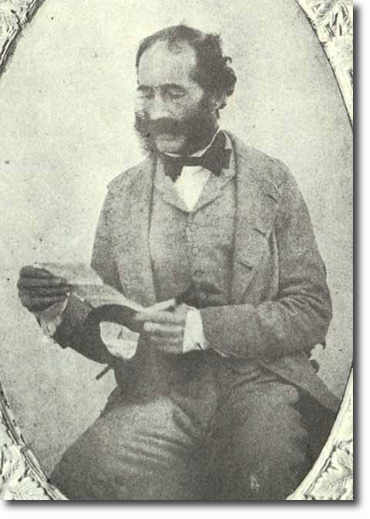|
|

 |
| Anson became famous for being Commander-in-Chief in India, and for his involvement in the Indian Mutiny. He was born in 1799 and entered the army in 1814 as an ensign aged 15, in the Scots Guards. He served with the 2nd Battalion in the Nederlands in 1815 and was present at Waterloo. He stayed in the regiment until 1825 when he went on half pay as a lieutenant-colonel. He was an MP for 35 years for Great Yarmouth from 1818 to 1835, Stoke-on-Trent from 1836-7, and the southern division of Staffordshire from 1837-53. He was a strong Whig supporter and held the office of Principle Storekeeper of the Ordnance. While he was in politics he became addicted to racing and whist. He married a society beauty, the Hon Isabella Forester.
When Wellington became C-in-C in 1842, Anson was appointed his ADC until his promotion to Major-General in November 1851. In August 1853 he was appointed to the staff of the army in India and placed in command of the Meerut Division. A year later he was made C-in-C the Madras Army and a year after that, in November 1855 he was appointed Commander-in-Chief in India. He was quite young for the job at 56 and at first the Governor-General, Lord Canning did not get on with him. But he later changed his mind; "It would be very difficult to quarrel with anyone so imperturbably good tempered, and so thoroughly a gentleman." He left Calcutta and went on a tour of inspection in the Upper Provinces in September 1856. The photo shown here was taken at Lucknow at that time. He arrived at Ambala in March 1857 and was involved in the greased cartridge controversy. He attempted to allay the fears of the 36th Native Infantry, but without success. He also tried to suspend the issue of new cartridges until the results of a report were known. When the 19th Native Infantry caused trouble at Berhampore he was in favour of their disbandment. But he may have been the unwitting trigger that set off the Mutiny when he ordered the court-martial of troopers at Meerut who refused to use the cartridges. He expressed the wish that they should be severely punished. The result was the outbreak on the 10th May 1857 of the Great Indian Mutiny. Anson was in Simla when he heard the news on the 12th May. He was there recuperating from illness. He only ordered one regiment to march that day, not realising the seriousness of the situation. Sir John Lawrence urged him to advance on Delhi as soon as possible but he was waiting to collect adequate forces and also for the return of William Hodson from Meerut to establish the situation there. He finally set off for Delhi on 24th May and arrived at Karnal on the 25th where he caught cholera. On the 27th May, one of his last orders was to Hodson, to raise a regiment of cavalry, but later that evening, he died. |
Regimental Colonels | Regimental details
Armed Forces | Art and Culture | Articles | Biographies | Colonies | Discussion | Glossary | Home | Library | Links | Map Room | Sources and Media | Science and Technology | Search | Student Zone | Timelines | TV & Film | Wargames